Features of Cloud Storage: Full Guide in 2025
Cloud storage is a part of every remote worker’s daily life, but it’s not always easy to understand. This guide to the features of cloud storage will clear up any dilemmas you may have about how cloud storage works, so read on.
Cloud storage is one of the easiest types of software to use, but some of its more complicated features can leave you stumped. Cloud storage companies don’t always explain how features work, and if you’re shopping around for a cloud service, you need to know what you’re getting for your money. That’s why we created this guide to the features of cloud storage to help you make the best decision.
Key Takeaways:
- Cloud storage is the best way to store your data, because it makes it available online from wherever you are.
- Every cloud storage provider should have essential features like versioning, deleted file retention and file previews.
- Some cloud storage providers offer more advanced features like note-taking apps, media players and integrations with third-party apps.
- Always look for cloud storage that offers space-saving features like one-way syncing and selective sync.
In this article we’ll discuss the basic cloud storage features and the more advanced ones as well. We’ll go over collaboration and productivity features, file sharing and syncing, and we’ll even dive into how the basic cloud storage features work (or should work), so read on.
Basic Features of Cloud Storage
Let’s start with the basics. These are the essential features that most good cloud storage services offer and are integral to the cloud storage experience. Of course, the main purpose of a cloud storage service is simply storing data online for remote access, so these features all tie into how you use the cloud at the most basic level.
1. Versioning
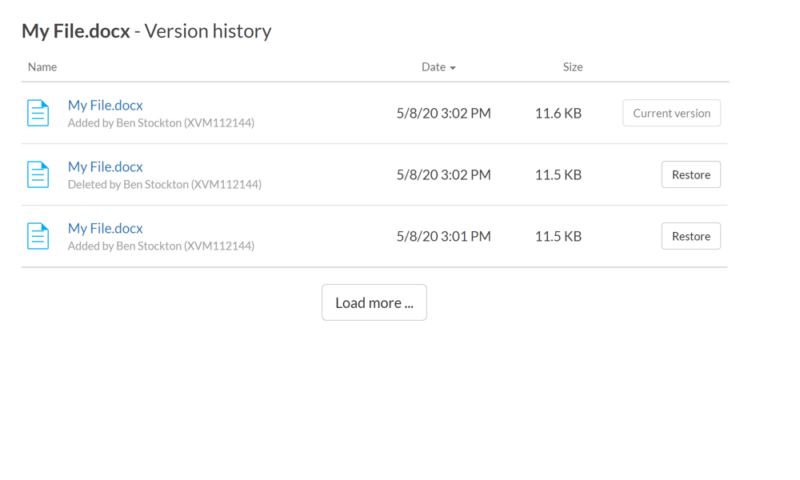
Most cloud services let you keep and restore previous versions of files. As you can imagine, each service handles this differently.
Some keep an indefinite number of files, but only for a certain period — say, 30 days. When those 30 days are over, the old version of the file gets deleted. Other services keep old versions of files forever, but they only store a certain number of versions — say, 10 (when you add an 11th version, the first one gets permanently deleted). And of course, some just let you keep as many versions as you like forever.
In any scenario, more is always better. For example, Dropbox only keeps versions for 30 days, while Sync.com has a 180-day versioning history. You can see how the two services stack up against each other in our Sync.com vs Dropbox comparison.
Finally, it’s important to note whether or not your versioning history takes up storage space. Sometimes a service will have unlimited versioning, but you’ll have to manually delete previous versions when they start eating into your storage quota.
2. Deleted File Retention

Deleted file retention functions similarly to versioning. If you’ve ever had a computer with a “recycle bin,” you’ll know what this is about.
Essentially, some services keep your deleted files indefinitely, while others keep them for a certain time period, and your trash may or may not count against your cloud storage limit. Otherwise, everything from the “versioning” section applies here too.
3. File Previews

some even let you open and view documents.
You’d think that by now every cloud storage service would let you preview files. Alas, some services choose to only let you preview certain file formats, if any at all.
For example, you may be able to preview only images, or only media files (images, video and audio). The latter is the most common scenario. Many services also let you preview PDF documents and simple TXT files. A select few let you read Microsoft Word documents (DOC or DOCX), and fewer still let you preview presentations and spreadsheets.
Advanced Cloud Storage Features
Things get a little trickier here. Advanced features could be anything from a simple notes app to a full in-house document editor, and anything in between. These are all the features tangential to cloud storage but not strictly essential to your use of the service.
Having this in mind, this is nowhere near an exhaustive list, but it covers some of the most frequent extra features a cloud storage service can have.
1. Note-Taking Apps
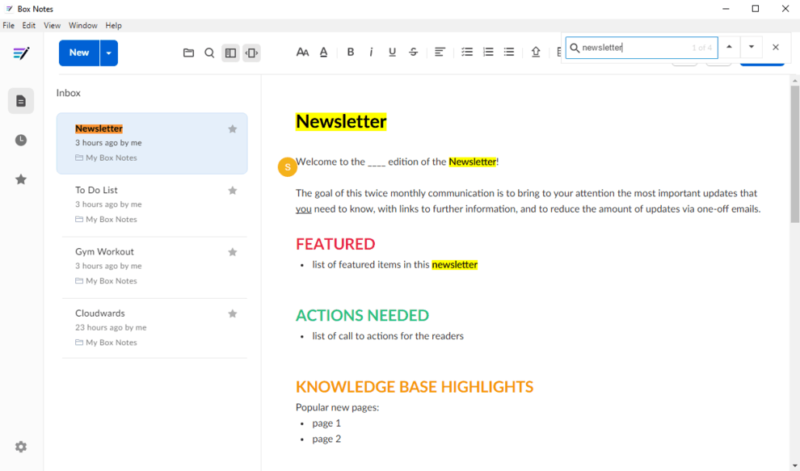
apps featuring to-do lists and embedded media.
Some cloud services have a note app within their cloud storage app or website, and these vary in complexity. Some services have very simple note apps that only let you — well, take notes (kinda like the “notepad” on Windows). Others go the extra mile and add things like checklists or to-dos, or they let you add images to the note. Some even let you embed YouTube videos.
Note-able examples of the latter are Google Drive’s Keep, Microsoft OneDrive’s OneNote, Dropbox’s Paper and Box’s Box Notes. You’ll notice all of these (except Dropbox) actually offer their notes app as a standalone app that you can use separately from the cloud service, and they just integrate those apps into the cloud service.
2. Document Editors
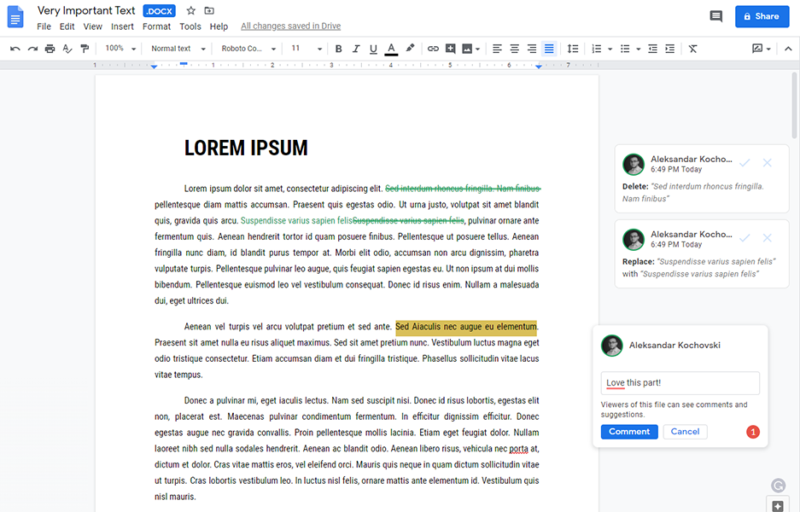
Having a document editor is a very big plus for business cloud services. Now, making a document editor from scratch is no mean feat, so most cloud services opt for integrating an existing one into their service.
Dropbox is the best example of this, letting you use either the Microsoft Office or Google Workspace Suite to edit documents of the appropriate file types. As a refresher, Office includes Word (text documents), Excel (spreadsheets) and PowerPoint (presentations), and these correspond to Docs, Sheets and Slides (in that order) on the Workspace side.
As you can imagine, OneDrive only works with Office (both are Microsoft products), while Google Drive uses Workspace (both are Google products). Sync.com and Koofr also let you open and edit documents in Office. Woelkli,on the other hand, integrates with two open-source office suites: OnlyOffice and Collabora Online.
3. Media Players

Media players can also vary in complexity. Most services offer the very basics, in that they only let you play a video or audio file in isolation. Some give you a limited media player experience, with “play,” “pause,” “previous” and “next” buttons.
Very rarely, you’ll see a service with a full-blown media player — like pCloud, for example — that displays album art when playing, lets you create playlists and sorts your media files by artist or album.
On the other hand, Google Drive offers advanced media controls for videos by sticking the YouTube interface on top of your video. This lets you control playback speed and resolution and even add auto-generated closed captions (its music player is very low-tech in comparison, though).
4. Organizational Features
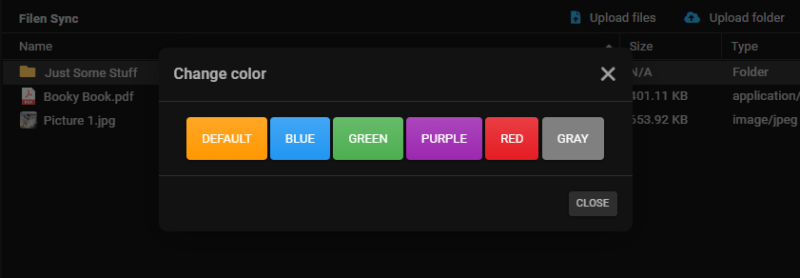
These are usually very minor quality-of-life features and most people will miss them. They come in the form of color-coordination for your folders, and some business-oriented customization features, like customized icons and brand logos.
5. Browser Extensions

browser extensions, like Koofr and pCloud do.
Browser extensions can vary wildly in what they do — take MEGA, for example. It has a pretty useless browser extension that basically just takes you to the web interface, so it functions more like a bookmark than an actual extension (although it does help improve security in a very minor way).
On the other end of the spectrum, you have the pCloud and Koofr browser extensions, which help to extend the cloud storage experience through the browser. Both services offer a similar function: They let you save any image you see on the internet to your cloud account. They even let you download images that you normally wouldn’t be able to, like Instagram pictures.
6. Third-Party App Integrations
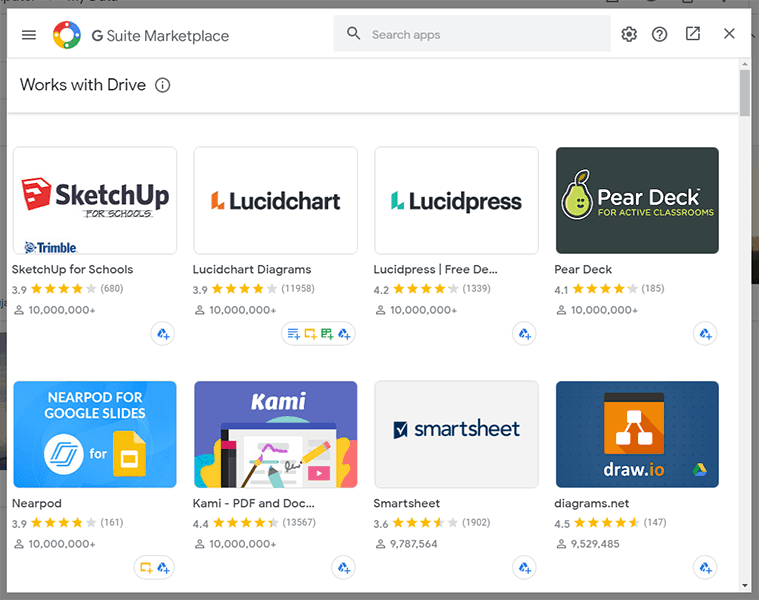
And now we come to the most complex part — third-party apps. We actually touched on this previously with the document editors. Essentially, some cloud services allow you to link your cloud storage to another app or service.
For example, in the case of Sync.com, this comes in the form of a default integration with Microsoft Office. There’s no setup needed — you just open a supported file and edit away in Office. And that is usually the case for document editors.
For Sync.com, Office is “third-party,” meaning it wasn’t created by Sync.com, but works with it nonetheless. In the case of Google Drive and Workspace, they’re both products of the same company, so they’re “first-party” or in-house apps.
That aside, let’s move on to more complicated apps. Sometimes an integration works by simply allowing another website or app to access your cloud account. For example, let’s say there’s a website that lets you make drawings. You could link it to your Google Drive, and have it automatically upload any drawings you make to your cloud storage. Read our how to back up to Google Drive to learn more.
Another way to add third-party apps is via add-ons. For example, Google Drive and Dropbox have their own app stores that let you install add-ons to your cloud storage. These add-ons can expand the cloud service’s functionality in ways you normally wouldn’t expect.
For example, you could install a PDF editor that lets you edit and digitally sign PDFs (replacing an expensive paid desktop app). You could even install a 3D model viewer, to let you view and navigate through 3D models right in your browser. The possibilities really are endless.
7. Cloud Management
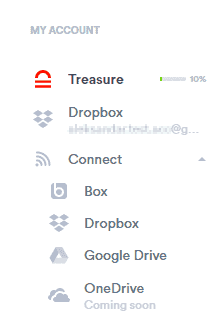
This is a pretty niche feature that only two cloud storage service providers (that we know of) offer. The services that do are Koofr and Treasure Cloud. Both let you link other cloud services (like OneDrive, Google Drive and Dropbox) to your Koofr or Treasure account. This lets you manage files that you store in other cloud accounts within the Koofr or Treasure interface.
There’s something to be said about this being a poor security practice. Koofr and Treasure are relatively secure services and aim to keep your data private, while this isn’t necessarily the case with the services they let you link to. Sharing data between a secure and an insecure service can compromise the security and privacy of both.
File Sharing Features
One of the biggest benefits of cloud storage is the ability to share files. Almost every cloud service offers file sharing, but not all offer the same options. If you look at our best clouds for sharing feature, you’ll see a few things most of them have in common.
1. Sharing Methods
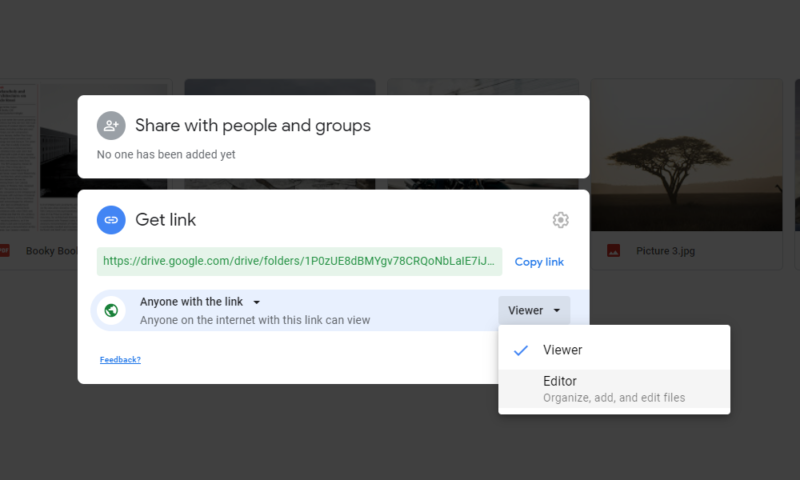
First, let’s go over the two main ways of sharing files and folders. You should be able to share a file via email or a direct sharing link.
Sharing Links
The sharing link method is usually more restrictive, as it assigns everyone with the link the same sharing permissions. That’s not to say sharing links are without options, and we’ll go over those soon. Sharing links are handy for their ease of use.
They’re best used for sharing innocuous files, like sharing a cat photo with mom. A link will allow mom to share it with dad and grandma, too, just by pasting the same link. But then grandma could get confused and post the thing to her Facebook and…well, you see why you wouldn’t want to send a generic link to a sensitive file to just anyone.
Email Sharing
Sharing things via email ensures that only the intended recipient can access the file. Of course, this only applies if the recipient is a user on the platform. Sharing a generic sharing link over email does not give any inherent advantages; however, if both the sender and the recipient are on the same platform, that opens the door for greater control over sharing permissions.
2. Sharing Permissions
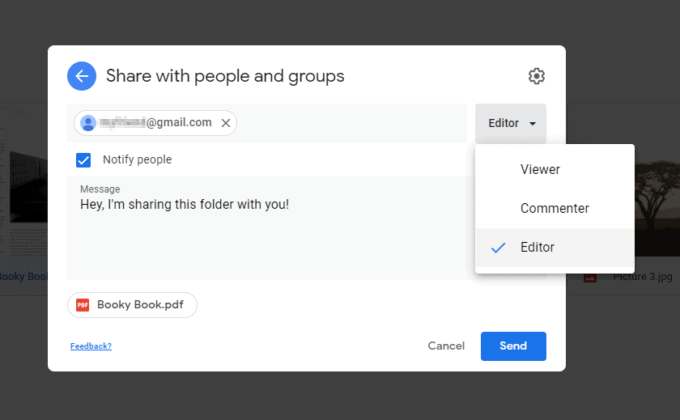
commenting and downloading permissions.
You should be able to give the recipient certain privileges regarding your file. These include the ability to view, edit, download or share the file. If you’re sharing a folder, you want to be able to let people contribute or upload files to the folder. Permissions are usually tied to email sharing, although they do exist in link sharing as well (ex. from Google Drive: “Anyone with the link can edit”).
3. Sharing Options
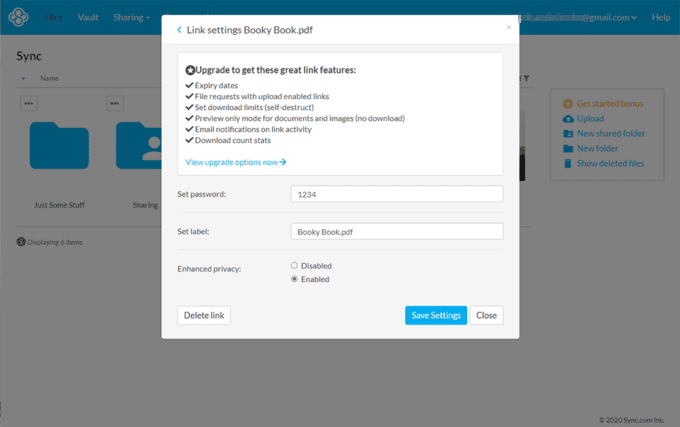
Besides general permissions, you can also set specific options for sharing links. For example, you can set a link to expire after a certain time (set an expiry date), or after a certain number of downloads (set a download limit). You can also set notifications for downloads, or even get download count stats, like Sync.com gives you.
Some encrypted cloud storage options will allow for encrypted file sharing. These might allow you to decouple the decryption key from the sharing link, like MEGA does. This means that if you share your file with someone, you need to send them the decryption key separately. Other services might simply let you set a password for the shared file instead.
4. Folder Sharing
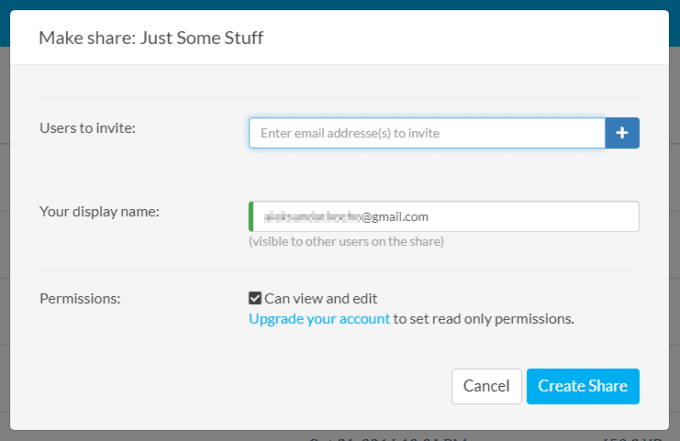
that allows non-users to contribute to a folder.
Folder sharing works a bit differently than file sharing. Besides the regular permissions, you also want to be able to set upload privileges. You should also be able to send upload requests for files, so that a person without an account on the platform can contribute to the folder.
File Syncing Features
Syncing makes sure that the same file version appears on all your devices. In other words, whenever you make a change to one of your files in the cloud, the latest version gets downloaded to all your devices. This is generally what distinguishes cloud storage from online backup applications, which are focused on one-way transfers to create secure copies of data.
1. Sync Folder Method
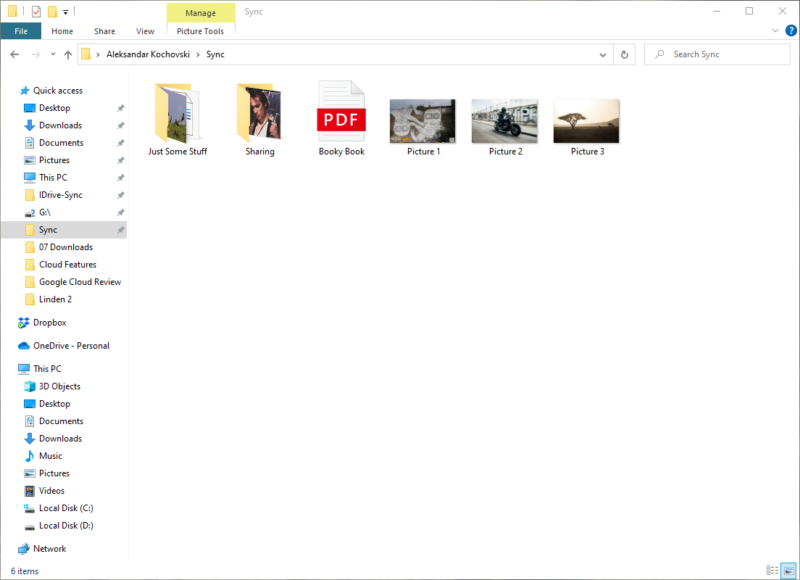
There are several ways to sync files. The oldest one is the sync folder method, first introduced by Dropbox. In this model, you get a folder on your computer which acts like a local drive and is where all your cloud files get synced.
This means that anything on your cloud account gets downloaded to your computer in this folder, and anything you paste into this folder gets uploaded to your cloud account (and then synced across all your devices).
This method has a significant flaw in that it creates a lot of redundancy. If you have an established folder structure that you use regularly, the sync folder won’t be part of it.
Say you have a folder on your personal laptop titled “work” where all your work files go. You use this folder when you work from home, and it contains files you want to sync to your office computer.
However, to back it up, you must manually copy it over to the sync folder every time you make a change. What’s worse, this means you must have two copies of the folder on your computer, taking up double the space. Not to mention, you could simply forget to copy over the changes once you’ve made them, which means you won’t have the latest version of the file on your office computer.
Lucky for you, there are solutions to this.
Sync Any Folder
To alleviate this issue, some providers will allow you to choose which folders you want to sync. This means you can designate your “work” folder to be synced to the cloud. Now, this isn’t a perfect solution. These files will still get synced to a sync folder when you go to another device, so you’ll have to work from within your sync folder on that device (a perfectly reasonable option).
Selective Sync
Selective sync aims to solve some of the redundancy issues the sync folder model creates. It allows you to set certain files or folders to “online-only.” This means they only appear in a web browser and don’t get synced to your devices. This works to save you some hard drive space, especially for files you don’t need to access frequently.
The one issue with selective sync is that you can’t see all the files you have online. Dropbox, for example, solves this issue with its “Smart Sync” feature, which leaves a “ghost” version of the file in your sync folder. Files marked for smart syncing don’t get downloaded to your computer, but you can still see them as a sort of download shortcut. When you click on them, they get downloaded and you can access them.
2. Virtual Drive (Network Drive)
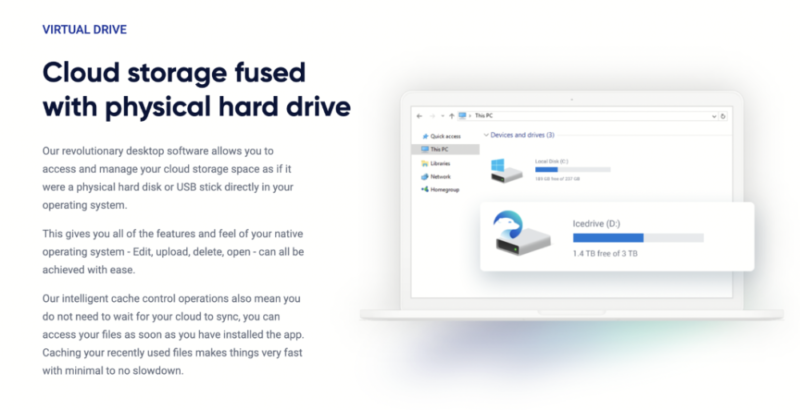
they require a constant internet connection.
If you’re not convinced by the sync folder method, you could try a service that offers a virtual drive instead (a la pCloud or Icedrive). A virtual drive, or network drive, looks just like the other drives on your computer (think “Local disk (C:)”).
The thing is, a virtual drive doesn’t exactly sync your files in the strictest sense of the word. It displays your cloud files on your computer, but they’re located in a virtual folder that doesn’t use hard drive space. Instead, the virtual drive only uses your cloud storage space to store files. This means you can still access your stored data, even though it essentially isn’t synced to your computer.
If you double-click on a file in a virtual drive it will temporarily download, allowing you to access it on your computer. You can then edit the file and save the edited version, which will get uploaded to the cloud and deleted from your device.
Of course, the obvious downside is that you need to be online at all times to be able to access your files. With the regular sync folder model, you can still access your files, even if you can’t access the latest version of all your files. A virtual drive is also terrible for editing large files, as you have to download the entire file and then reupload it each time you want to make a change.
3. Block-Level Sync
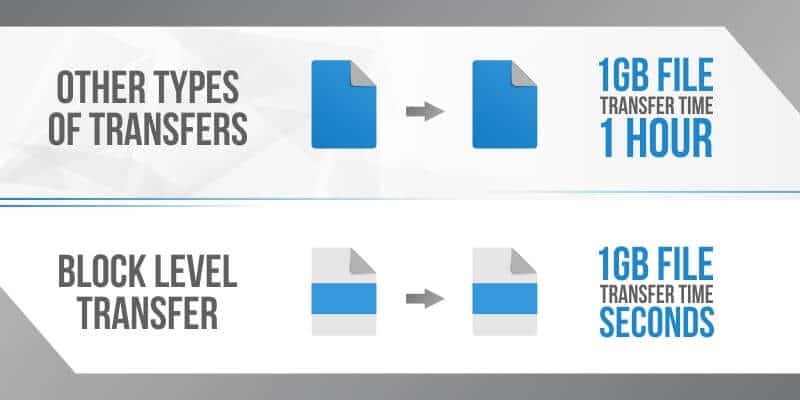
uploading parts of a file that have changed.
However, the problem of storing large files isn’t uniquely tied to network drives. Even with regular sync folder services, you still have to download and reupload an entire large file every time it’s updated. Enter block-level sync.
When you alter a file, you don’t change every single bit in the file. Unless you rewrite the file completely, you’ll have portions of data that stay unchanged even after editing. Block-level copying takes advantage of this by segmenting your file into blocks and only updating the blocks that get changed. This makes for faster uploads and downloads during sync, because a much smaller amount of data needs to be transferred.
4. One-Way Sync & Two-Way Sync
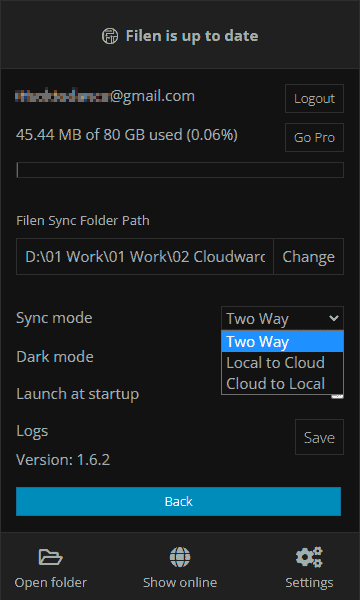
Sync relationships are another way to save on hard drive space, though not many services offer them. However, if you’re lucky enough to use a service with sync relationship options, you’ll likely see the following two options.
Two-Way Sync
Two-way sync is the default form of syncing for most cloud storage services, and it basically means that whatever’s on your cloud also gets downloaded to your computer, and whatever’s in your designated sync folder will get uploaded to the cloud. If anything is deleted in either location (the cloud or your device), it gets deleted everywhere.
One-Way Sync
One-way sync means that files only get synced one way, either from the cloud to your computer or vice versa. In the former scenario, you can only upload files from the browser to your cloud account, and those files would get downloaded to your computer.
In the latter scenario, files don’t get downloaded to your computer at all, but files in your designated sync folders will still get uploaded to the cloud for remote access. This is a great option for saving hard drive space.
Customer Support Features
Finally, we have customer support. There are three main things to look out for: a knowledgebase, a user forum and good support contact options.
1. Knowledgebase
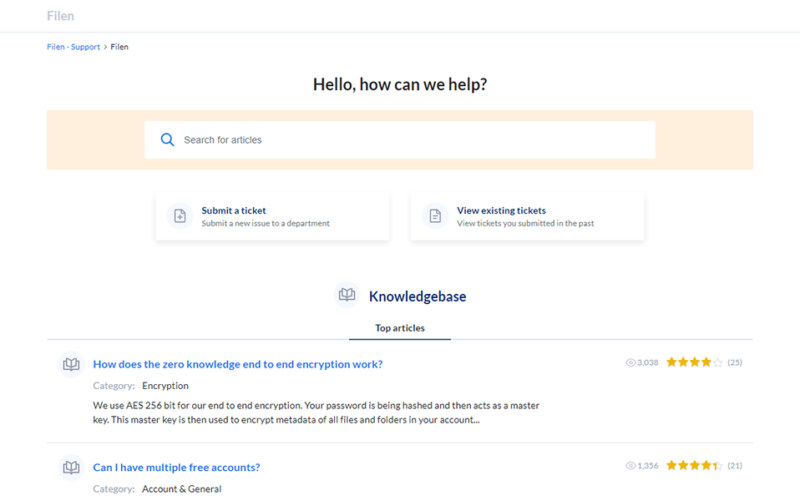
other support options to solve more complicated issues.
A knowledgebase is a collection of data about how a cloud service provider works. It should be exhaustive, but not confusing. Ideally, it will include images and videos and not just text in its entries. Entries should be clearly labeled and easily searchable. It’s also important that the knowledgebase is regularly updated and doesn’t contain inconsistencies.
2. User Forum
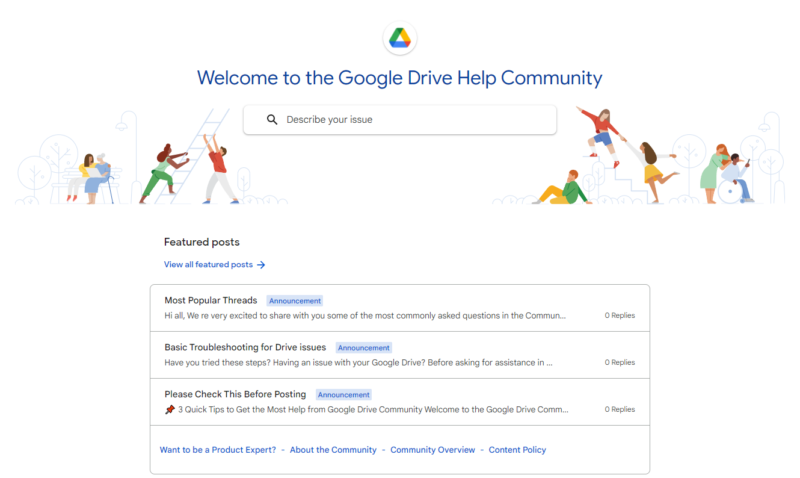
Nowadays, most online services have their own forum on Reddit, but those are unofficial and might not be helpful, unless they serve as a de facto communication hub where devs actively participate.
However, some services have self-hosted forums, and although these might be less lively than a subreddit, they’re usually more actively overseen by devs or company employees who might respond to your question.
3. Chat Support
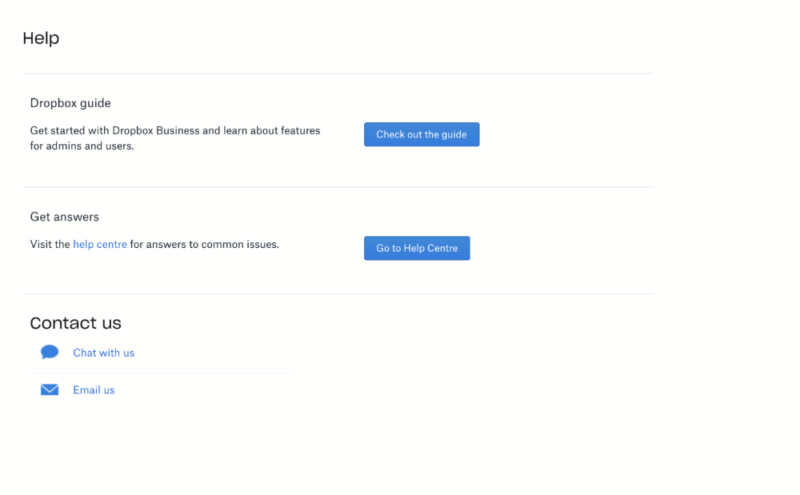
Speed is of the essence when contacting support, and there’s no faster option than instant messaging, or chat support. Again, some services will offer support through Facebook chat, but here we’re focusing on a first-party chat function that’s integrated into the app or website. Fast response times are important, as some services might have you queue for several minutes to get in touch with a support rep.
4. Ticketing System
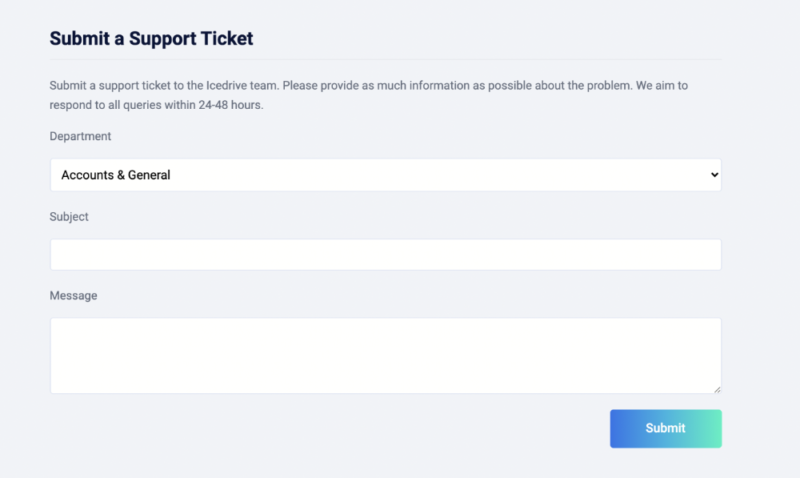
Most services offer a ticket submission system, where you can submit a complaint or ask for help. This won’t get you an immediate response, but you should expect the response to come at least within one business day. Responses might arrive via email, but sometimes you’ll just get an email notification that you got a reply, and will have to return to the website to see the response.
5. Email Support
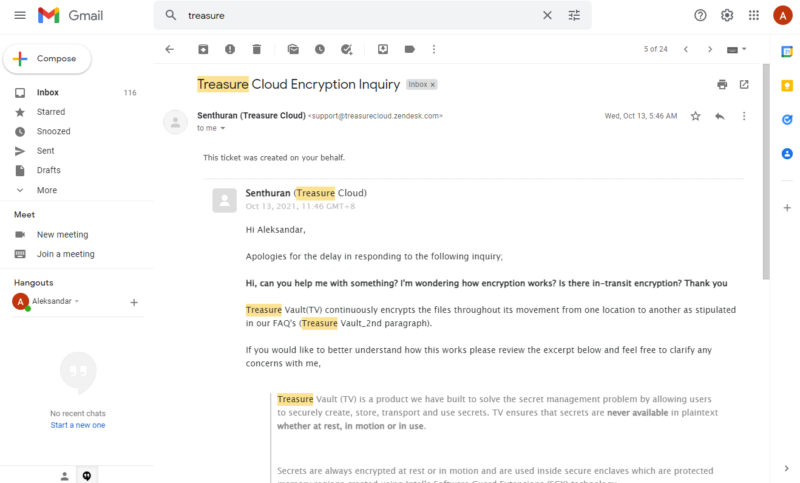
services reply quickly over email, regardless.
Email support includes simply sending an email to the support team directly. Anything said about ticket support also applies to emails.
Final Thoughts
There you have it, folks. Hopefully, you’ve come out of this with a little more knowledge about cloud storage providers and how they work. We tried to cover every cloud storage feature that you need to know about, so please let us know if we missed anything.
Did you enjoy our explainer on cloud storage features? Which cloud features do you use the most? Leave your thoughts in the comments below, and as always, thank you for reading.
FAQ
Cloud storage works by uploading your data to remote servers, letting you access your cloud data from anywhere in the world, as long as you have an internet connection.
Besides making your cloud data available remotely, cloud storage lets you sync your data across devices, share files and much more.

